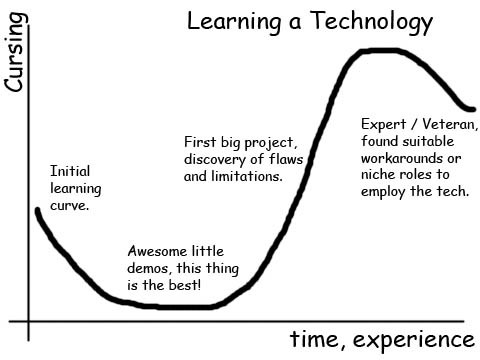Disrupt the way you become business ready
Disruption seems to be flavour of the year in business and technology. Shelly Duncan says we need to take an enhanced approach to how we learn and use technology that drives business outcomes.
It seems these days that “disruption” in business and technology is the cool kid on the block. This can be attributed to, in no small part, the uptake of cloud technologies. Add to that the speed at which these technologies are continuously changing and being implemented by users in increasingly different and daring ways.
Of course, this poses a whole gambit of new challenges, not least of all the challenge of keeping up with the constant change in cloud technologies. Just how does one get one’s team up to speed and ready to deliver a robust solution that for all intents and purposes seems to be a moving target.
So with disruption being the flavour of the year, maybe it’s time to take a different, or perhaps enhanced, approach to the way we become educated, enabled and empowered to deliver the technology framework that drives competitive business outcomes.
Stephen Calendar’s “Learning a Technology” graph illustrates the traditional way of skilling up on new technology:

As the graph illustrates, the majority of time is spent between the initial learning curve – this could be self-taught or likely a vendor certification – and the point of becoming expert. The challenge for businesses is that this, more often than not, is a time consuming, costly and painful process (note the dramatic increase against the cursing axis once projects start).
So how do we disrupt the current method of cloud (or any) technology education and reduce the risks associated with moving from technically certified to business delivery ready?
These are just a few things to consider.
Experiential learning.
Nothing beats hands on experience – that takes time, and the inevitable mistakes are costly, in money, time and reputation. How do you access experience without exposing your business to costly mistakes, expensive services personnel or partnering that may eventually turn competitive? What if you could get hold of the secret sauce that comes as a result of years of experience… without having to go through all the learning pains?
Integration of technology stacks.
How much time and money do you have available to spend on multiple vendor certifications and siloed best practices? How long does it take to learn how these best practices fit together in real world scenarios? How long does it take to see a return?
How do I know what I don’t know?
Ignorance is not bliss – it’s expensive, it’s painful and stressful and can lead at the very least to projects delivered over-time and over-budget and at worst, to lost clients, law suits and recruiting agencies. If you don’t know what you need to be focussed on, how do you effectively prioritise?
Fake it ’til you make it.
Business doesn’t stop because you or your team are still getting up to speed. On the one hand you need to deliver projects to justify the training costs – on the other, you have yet to build the competency to actually deliver. How do you close that gap? If you partner to back-fill skills – how do you control the project, the personnel and get guidance on what needs to be done?
I want it and I want it now!
It’s an instant gratification world. Speed to market is one of the top competitive advantages. Think about how you can access knowledge and experience that is structured in a way you can find it, understand it and use it instantly – on the job.
According to CompTIA’s latest Annual Trends in Cloud Computing one of the biggest challenges for companies moving towards a cloud-based architecture is the ability to keep up with the skills required, and many organisations simply walk away from projects that would allow them to maximise the business advantages of cloud computing.
This would suggest there is a gap between education (there are any number of courses and certifications available) and truly being enabled – that is able to deliver a robust solution that provides strong and measurable business outcomes.
What if you could close that gap?
How would it transform your business, provide new opportunities, give you a competitive edge and increase your financial rewards?
This article first appeared here and is republished with the permission of the author.
Shelly Duncan is helping customers close the gap between theoretical know-how and business ready delivery. She is Channel Manager for Qirx in a box. Previous roles were with Avnet Technology Solutions, Samsung Electronics Australia, VMware and itX Group.












veradriane
May 12, 2016 at 11:28 am
Straying current to the market trends
Shelly has shared some great insights on technology learning and business integration. Here's my contribution to this already invaluable post.
Staying on the top depends strongly on your business niche, but some changed in the worldwide economics and management systems leave an open door for exploration of the current market trends. A good example of this occurrence is the development of the franchise business market. In the recent years, franchising has become a substantial part of the world industry. In the Southern Hemisphere, franchising has developed significantly, reaching a prosperity rate of over 90 percent in Australia. Staying current to the business trends and becoming part of a franchise business has helped Australian company owners escape a possible financial crisis during the years between 2008 and 2010. You can learn more about franchising in the following article:
5 Franchising Q&As with a look at opportunities in Australia
To wrap things up, technology learning and integration in the current business market is an invaluable development process, yet staying current to the trend waves can get your business a higher ranking in your local business niche.
* * *
Veronika Adriane
Marketing specialist and franchising consultant
Fantastic Services | Sydney